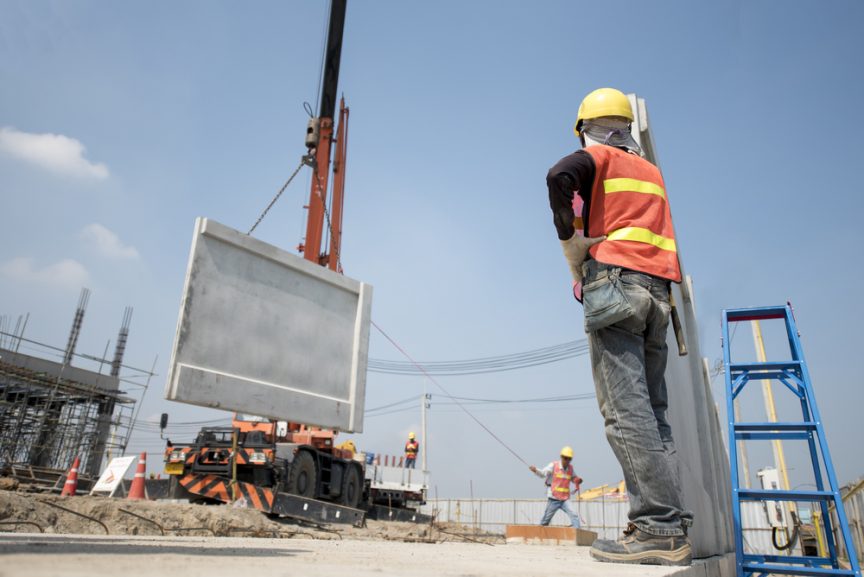New research is bullish on the precast concrete industry’s prospects, predicting the market will grow to $185 billion by 2023.
Companies and investors in the precast concrete sector have more than enough reasons to be optimistic this year. A report from HTF Market Intelligence released last October forecasted that the market would grow from $126.89 billion in 2017 to $185.35 billion in 2023, estimating a compound annual growth rate of 6.52%.
The report’s findings are principally based on an analysis of the market’s major players, including manufacturers, suppliers of raw materials, end-users, and traders. Focusing on the US, Chinese, European, Japanese, and Indian markets, HTF points to global trends and expected technological developments as primary drivers of the tremendous growth they expect to unfold over the next four years.
Construction Booms Across the Globe
One of the biggest trends behind the rapid growth of the precast industry is an expected increase in infrastructure spending. The need for improvements to public infrastructure in the US, for example, has become one of the few remaining political issues with bipartisan support, and research suggests that such an increase would have a positive impact on the economy. It’s therefore quite reasonable to project a good deal of large-scale infrastructure spending at the federal and/or state levels over the next few years.
Infrastructure spending is already robust in developing economies like India, where the government is focusing on strengthening its roads, airports, and inland waterways. Rapid population growth and urbanization in not only India, but China as well, are also driving huge demand for construction materials and services.
In Europe, despite an ongoing labor shortage, the construction industry is also expected to see boom times in the coming years. The biggest growth is predicted to occur in Spain and the Netherlands, while Germany, the largest market on the continent, will grow by 2.9% in just the next year.
Technological Advancements Bolster Growth
Another factor behind the progress of the construction and, by extension, precast concrete markets is the development of new technologies that are improving the speed and efficiency of infrastructural projects.
Urban growth in China has been accelerating for over three decades, but the past few years construction projects have been characterized by new, cost-efficient “smart” building methods and materials, including the use of “self-healing” concrete. In Europe, technologies like building information modeling (BIM) are allowing for greater architectural precision, significantly reducing the number of mistakes and thereby lowering costs.
Cutting-edge technology is also making construction more environmentally friendly. New cooling techniques are being developed to reduce the carbon footprint of concrete manufacturing by significantly reducing the heat of hydration. In the Netherlands, projects that might otherwise require concrete are being built with radical new green materials, including recycled plastics.
Precast’s Advantage
One of the reasons precast has been a particularly big beneficiary of general construction growth is that it allows projects to be completed in less time and at a lower cost than traditional, on-site techniques for building concrete structures. Since they’re not typically not created in the open air, precast structure also less susceptible to factors like moisture and pollution.
But the precast market’s projected growth in the US could falter if industry players fail to reach compliance with recent OSHA standards regarding acceptable levels of respirable silica dust in the workplace. Without a way of controlling silica dust levels, manufacturers and others in the precast concrete business could be slapped with heavy regulatory fines.
The overall outlook remains rosy, however, because these businesses have an experienced partner for controlling silica dust in Midwest Industrial Supply, Inc. Our suite of dust control products are certified by multiple independent agencies as environmentally friendly, and can be easily applied without disrupting day-to-day operations.
Patented, cutting-edge products like EnviroKleen® use advanced chemical binders to lock dust fines into a site’s work yards and access roads, actually increasing their stability. These products work far more effectively than techniques like watering, which will actually degrade the strength of a road with use.
There are plenty of reasons for precast concrete businesses to be optimistic about the coming years, but without good dust control, regulatory fines could take a big bite out of their projected profits. That’s why these companies should get in touch with Midwest to find a dust control strategy and customized application program that fits their needs and budget.

